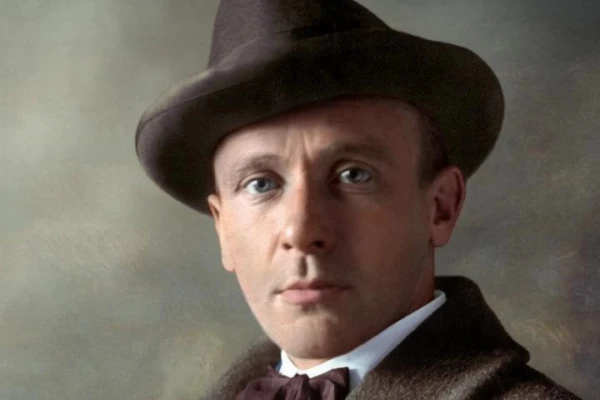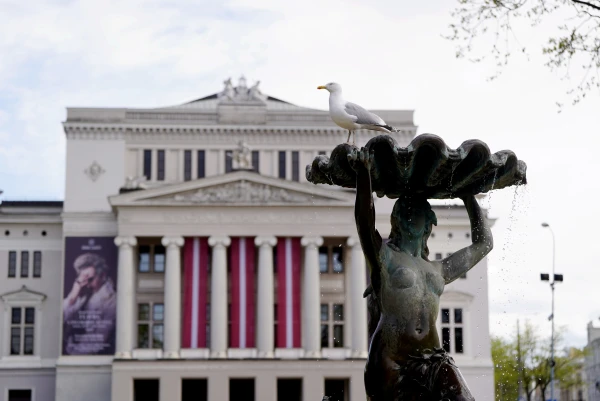
The author, using his own memories of Kyiv during those years, writes a novel about an unending war without a victor.
Until November 22, the I.S. Turgenev Library-Reading Room (Moscow) is hosting an exhibition 'The White Guard' by Mikhail Bulgakov. The exhibition is organized in collaboration with the M.A. Bulgakov Charitable Foundation to mark the centenary of the first edition of the famous novel. 'The exhibition tells about the time and place of action of 'The White Guard', its creation, the first publication, and the first play by M.A. Bulgakov that grew out of the novel, 'Days of the Turbins', as well as the serious problems that were associated with both the novel and the play,' the exhibition announcement states.
This is a novel about the chaos of the Civil War, where the only refuge is a family home with a tiled stove. From his experience of living in Kyiv, besieged by Petliura, Bulgakov creates a story of eternal conflicts — the old and the new, honor and cowardice.
What is this book about?
About the Turbin family — Alexei, Elena, and Nikolka — and their acquaintances caught in the whirlpool of events of the Civil War in Ukraine. The events of the novel unfold from December 1918 to February 1919: A city governed by Hetman Skoropadsky and German military forces is first stormed by the peasant army of Simon Petliura, and then by the Bolsheviks. Russian officers attempt to protect the peace of the city but are disgracefully defeated before they can properly engage. Using his own memories of Kyiv during those years, Bulgakov writes a novel about an unending war without a victor, the collapse of the old world, and the emergence of the new, as well as about a house-shelter with 'cream curtains' and 'a lamp under a lampshade' that miraculously survives in this chaos.
When was it written?
The main work on 'The White Guard' took place in 1923–1924. By this time, Bulgakov had been living in Moscow for several years, in the apartment of his sister's husband, Nadezhda Zemskaya (this refuge would later become the prototype for the 'unpleasant apartment' in 'The Master and Margarita'). The writer complains in his diary about poor living conditions, lack of money, health problems, and the tiresome work at the newspaper 'Gudok'. He writes his first novel mainly at night. This process sometimes inspires him ('right now I hear within myself how my thought soars, and I believe that I am immeasurably stronger as a writer than anyone I know'), and at other times plunges him into despair ('I bitterly regret that I left medicine and doomed myself to an uncertain existence').
During the creation of 'The White Guard', Bulgakov manages to part ways with his first wife, Tatyana Lappa, and begin living with Lyubov Belozerskaya — to whom he dedicates the novel, which raises questions not only from his first wife ('So many nights I sat with him, fed him, took care of him... he told his sisters that he would dedicate it to me'), but also from his relatives. Thus, Nadezhda Zemskaya wrote to Elena Bulgakova, the writer's third wife: 'I myself saw the manuscript of 'The White Guard' in 1924, which had the inscription: 'Dedicated to Tatyana Nikolaevna Bulgakova'... And this was fair: she endured all the difficult years of his wanderings with Misha.' Bulgakov himself, judging by his diary, was not much troubled by doubts — describing the purchase of an issue of a magazine with his own novel, he noted: 'For some reason, the dedication attracted my attention the most. So it happened. Here is my wife.'
How is it written?
Against the literary backdrop of the 1920s, 'The White Guard' may seem like a very traditional, almost old-fashioned novel: this impression is created by the chronicle-like intonations ('Great was the year and terrible the year in the year of our Lord 1918, from the beginning of the second revolution'), numerous nods to Russian classics; and the genre of historical chronicle and family novel with landscapes, a clear plot, and lyrical digressions appeared provocatively outdated for that time. Valentin Kataev, a colleague from 'Gudok', recalled that Bulgakov's reading of 'The White Guard' made no impression on him; the novel seemed 'derivative, traditional'. However, all this play with classicism in Bulgakov's novel is not entirely serious. Almost Tolstoyan in conception, the work combines elements of a feuilleton, high tragedy with a comedic operetta. The narrative employs avant-garde techniques, seemingly borrowed from cinema: overlays, shifts in perspective, sharp montage transitions. Classic realism, upon closer examination, crumbles, revealing gaps into a world of mysticism and phantasmagoria.
How was it published?
Bulgakov signed a contract for the publication of 'The White Guard' in the Smenovekhovtsy magazine 'Russia'. According to the contract, the publisher of the magazine, Zakhar Kaganovsky, received preferential rights to a separate edition of the novel. In early 1925, the first 13 chapters (about 60% of the text) were published in 'Russia', but the concluding chapters did not manage to be released: the publication was closed, and Kaganovsky and the magazine's editor, Isai Lezhnev, left for abroad (the former voluntarily, the latter was expelled from the country).
In 1927, the first 11 chapters of the novel (starting from the 12th) were published as a separate book in a Parisian publishing house, Concorde, which was founded in emigration by the same Zakhar Kaganovsky. Concorde published only one book, 'The White Guard', and immediately closed. Almost simultaneously, a pirated edition of the novel was released by the Riga publishing house 'Literature': it edited the first part (for example, Alexei Turbin's dream was removed), and the ending was written by someone based on the finale of the second edition of the play 'Days of the Turbins', which was also in Kaganovsky's hands and was later published by him in German translation. If we believe Kaganovsky's open letter published in the newspaper 'Days', he received the play from a 'trusted person' of Bulgakov. The writer, however, categorically denied this, and in the story 'To a Secret Friend', he vengefully depicted Kaganovsky as the publisher Rvatsky ('I will tell you, my dear friend, for my terrible life I have seen scoundrels. I have been robbed. But I have never met a scoundrel like this one.').
Bulgakov scholar Maria Mishurovskaya notes that despite the vivid image of a rogue created by Bulgakov, Kaganovsky actually made a 'successful attempt to secure the texts of a Soviet author in the legal field of Europe through publishing houses opened specifically for this purpose'. The fact is that the USSR did not sign the Berne Convention for the protection of copyright, so if the novel and the play had been published first in the USSR, they could have been freely reprinted abroad, while the first publication of a work on the territory of the countries that are parties to the convention guaranteed that the author's rights would be protected.
The concluding chapters of 'The White Guard' were published as a separate volume in the Parisian publishing house 'Moscow' in 1929. For this edition, Bulgakov himself revised the ending originally written for the magazine 'Russia': in 1925, he still believed that he would write a trilogy, but for the Paris book, he had to change the ending so that 'The White Guard' appeared as a complete work. It is based on the Paris editions that reprints of the novel continue to this day, while its magazine ending is usually presented separately. In the USSR, 'The White Guard' was printed in full only in 1966.













